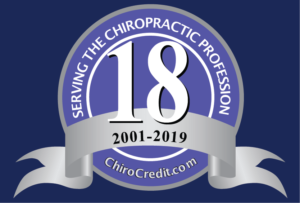In this upcoming interview, John M. Mayer, DC, PhD, CCRP, FACSM will discuss his extensive clinical and research experience in occupational health, wellness, and therapeutic exercise. Dr. Mayer has led teams on numerous clinical trials across the country on various aspects of wellness, clinical management, and prevention funded through federal, state, industry, and foundation sources, including the largest single financial commitment by the US Department of Homeland Security on low back injury prevention in firefighters. Please comment below if you have any questions for us during the interview. I might choose some of them for our conversation.

Up to 84% of the general population has been found to report low back pain (LBP) symptoms at some point during their lifetime. Another staggering fact is that low back pain is the leading cause of disability worldwide affecting nearly one in ten people. Not surprisingly then, back pain is the second most common symptom-related reason for clinician visits in the United States.
The costs for spinal conditions continue to rise. Consider that back pain has substantial recurrence rates that may affect 40% to 50% of patients within 6 months and 70% within 12 months. Current evidence suggests that the natural history of LBP is alike chronic conditions such as asthma, marked by chronic mild symptoms and periodic exacerbations. These developments have highlighted that LBP is a priority for employers focusing on workforce health and productivity (H&P). Employers are seeking to maximize the ratio of outcomes achieved relative to costs incurred (ie, value) for the investments that they are making in their employees. Furthermore, employers are in the unique position of being able to determine what treatments actually cost and how effective they are in their workforce.
The authors of this article point out that previous research has found that patients receiving chiropractic care have lower associations of probability of disability recurrence than patients of physicians and physical therapists. They also state that early use of magnetic resonance imaging (MRI) has been linked to prolonged disability, higher costs, and greater use of surgery without evidence of benefit on health and function.
The goals of this study were to assess the cost outcomes of treatment approaches to care for back problems in a major self-insured workforce, using published guidelines to focus on low back pain.
The study involved a retrospective time series analysis of tracked episodes of three types of ICD-9 code–identified back problems (n = 14,787) during 2001 to 2009 from a Fortune 500 company.
The sample consisted of back pain episodes stratified into 3 groups:
#1: LBP (low back pain) with neurologic findings (LBP/neuro) (n=1837)
#2: LBP with no neurologic findings (LBP/nonneuro) (n=8569)
#3: Other back (n=4381)
Of all employees, 39.4% of employees had at least one back pain episode and many had multiple episodes of LBP. Total costs (direct/indirect) per employee were calculated per year.
Results indicated that 5 overall episode treatment patterns emerged (overall sample percentage in parentheses):
- Information and Advice (TalkInfo): simple office visits, lab tests, emergency department or hospital visits, talk therapy, or visits involving imaging (59%).
- Complex Medical Management (Complex MM): visits for nerve blocks, surgeries, or comparable procedures. Any ties with other categories went to this category (2%).
- Chiropractic (Chiro): number of visits to a chiropractor was greater than 1 and comprised the plurality or greater of procedures. This included cases involving manipulation billed as PT if the manipulation occurred on the same day (11%).
- Physical therapy (PT): number of visits to a PT was greater than 1 and comprised the plurality or greater of procedures. Physical therapy by itself (no chiropractor) sometimes included devices or other palliative treatments (11%).
- Dabble: at most one visit for physician, chiropractic, or PT care, or at most one visit to two or more of these categories (17%).
The chiropractic group had the lowest prescription medication rates, least costs per episode of low back pain, and least guideline-incongruent use of medications and imaging. The chiropractic group also was the least likely to receive complex medical procedures like surgeries. Complex medical management costs were greater than 4 times more expensive for an episode of low back pain (over 3 years) with neurological findings than chiropractic care ($6983.82 vs $28,231.5). Physical therapy costs were more than double per episode of low back pain (over 3 years) with neurological findings compared with chiropractic care ($6983.82 vs $17,193.92). Similar cost savings in favor of chiropractic were found for an episode of low back pain (over 3 years) without neurological findings (chiropractic care = $6768.43, complex medical management = $29,344.25, physical therapy = $13,448.82).
Of note is that the complex medical management approach recorded the highest rates of prescription fills for opiods, other pain medications, SSRI/SNRI/tricyclics, and anxiolytics/sedatives/hypnotics. The PT group had the highest rates for NSAIDs, muscle relaxant, and oral steroids.
Reference: Tracking low back problems in a major self-insured workforce: toward improvement in the patient’s journey. Allen H, Wright M, Craig T, Mardekian J, Cheung R, Sanchez R, et al. J Occup Environ Med. 2014;56(6):604-20.
 Statistics tell us that up to 84% of the general population will report low back pain (LBP) symptoms at some point during their lifetime. This leads employers seeking to maximize the ratio of outcomes achieved relative to costs incurred (ie, value) for the investments that they are making in their employees. Previous research has found that patients receiving chiropractic care have been found to record lower associations of probability of disability recurrence than patients of physicians and physical therapists. Given these findings, the authors of this newly published article sought to assess the cost outcomes of treatment approaches to care for back problems in a major self-insured workforce, using published guidelines to focus on low back pain. Results of the study were that care congruent with 10 of 11 guidelines was linked to lower total costs. Of the five patterns of care, complex medical management reported the highest guideline-incongruent use of imaging, surgeries, and medications and had the highest health care costs. On the other hand, chiropractic reported the lowest rates of guideline-incongruent use of imaging, surgeries, and medications and had the lowest health care costs.
Statistics tell us that up to 84% of the general population will report low back pain (LBP) symptoms at some point during their lifetime. This leads employers seeking to maximize the ratio of outcomes achieved relative to costs incurred (ie, value) for the investments that they are making in their employees. Previous research has found that patients receiving chiropractic care have been found to record lower associations of probability of disability recurrence than patients of physicians and physical therapists. Given these findings, the authors of this newly published article sought to assess the cost outcomes of treatment approaches to care for back problems in a major self-insured workforce, using published guidelines to focus on low back pain. Results of the study were that care congruent with 10 of 11 guidelines was linked to lower total costs. Of the five patterns of care, complex medical management reported the highest guideline-incongruent use of imaging, surgeries, and medications and had the highest health care costs. On the other hand, chiropractic reported the lowest rates of guideline-incongruent use of imaging, surgeries, and medications and had the lowest health care costs.
Partner
Donate
Recent Episodes
- 069 – Dr. Walter Herzog – Biomechanics, Spinal Manipulation, Vertebral Artery and Gait March 13, 2025
- 068- Dr. Felipe Duarte – Neurobiology related to chronic musculoskeletal conditions and spinal manipulation November 21, 2024
- 067- Dr. Caroline Fagundes Discusses Vertebral Artery Strain, Posture and Falls October 15, 2024
- 066- Dr. Ronald Farabaugh – The Cost of Chiropractic vs Medical Management of Adults With Spine-Related Musculoskeletal Pain March 19, 2024
- 065- Dr. Clinton Daniels Discusses Manipulation and Prior Spine Surgery, Medications for Back Pain and More June 15, 2023
- 064- Dr. Matt Fernandez Discusses Physical Activity, Exercise and Chiropractic May 11, 2023
- 063- Dr. Robert Trager Discusses Spinal Manipulation, Lumbar Discectomy and Case Reports January 9, 2023
- 062- Dr. Lindsay Gorrell Discusses Spinal Manipulation, the Vertebral Artery, Reporting of Adverse Events January 3, 2023
Security – SSL Certificate
Partner
 Chiropractic Science is a Miami University Digital Health Literacy Partner. Health literacy is the ability to read, write, and talk about health habits in a variety of life situations and environments. Our interprofessional partnership promotes the use and dissemination of electronic materials for evidence-based EHealth.
Chiropractic Science is a Miami University Digital Health Literacy Partner. Health literacy is the ability to read, write, and talk about health habits in a variety of life situations and environments. Our interprofessional partnership promotes the use and dissemination of electronic materials for evidence-based EHealth.

